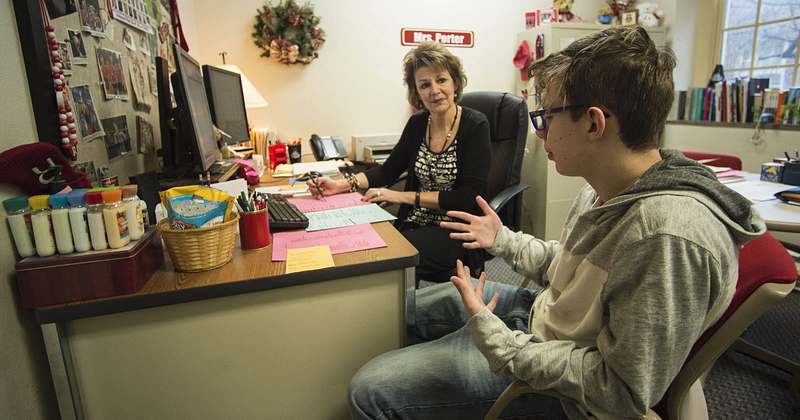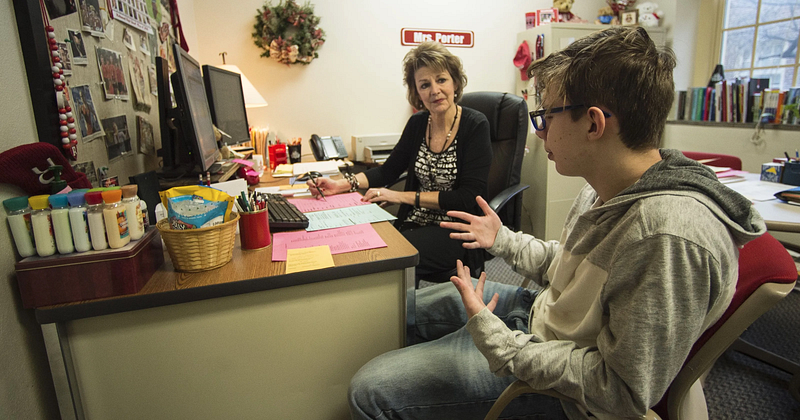
Students have a jungle of a future ahead of them: different paths to different places, each with their snares and tares. What they need is a guide. But more often than not, the guide is unavailable. They can’t help every step of the way like they should, so these young explorers are on their own. They merely guess which path is best and before you know it, they are drowning.
Our students are drowning. Unforgiving standardized tests, looming college applications, and an impending mental health crisis. According to the National Alliance on Mental Illness, one in five students suffer from a mental health issue, yet only half of them receive services. What our students need is attention from counselors to be successful in school and post-graduation.
However, our school counselors, whose job it is to provide this attention, are not doing so. For one thing, they are simply unable to. The American School Counselor Association recommends that schools maintain a student to counselor ratio of 250 to 1. That may seem like too many to provide adequate counseling, but given that only two states are at that ratio or below, it presents itself as a utopia. The national average is double that, and Kentucky sits right below it at 453:1 as of 2015. How can one counselor adequately advise that many students?
Well, it would probably help if they were qualified to do so. According to the ASCA, only three states require counselors to have specific mental health training before becoming a school counselor. Not only do counselors have too many students, but there are also counselors who are unequipped to handle at-risk students.
Not only do counselors have too many students, but there are also counselors who are unequipped to handle at-risk students.
What this boils down to is that 1 out of every 5 students don’t have access to a counselor, meaning they are unable to meet with them or don’t have one at all.
I have only talked to a school counselor twice in my entire school career. In times of crisis, I didn’t even know how to reach them unless I scheduled an appointment two weeks prior.
And worse yet, this counseling crisis hurts some more than others. As per a study in a school counseling journal, students in lower socioeconomic groups who didn’t talk to a counselor had significantly lower odds of applying to two or more colleges. The lack of counselors also shortchanges students of color. Schools with a higher minority and low income population tend to have fewer counselors, and thus are less prepared for their post-high school decisions.
School counselors are imperative to minorities and their mental health. African and Hispanic Americans are half as likely to seek mental health services as their Caucasian counterparts, and Asian Americans are even lower at a third of the rate. The implications are dire. For minority students, school may be the only place they can get help. They are relying on our school system and our counselors to be ready for life after high school, and that includes mental health.
Adolescence is a trying time. Puberty, family, school, and finding yourself; all along with figuring out what in the world you are going to do after high school.
Without help, these students are blind. Blind to the vines and snares of student loans and fearful of monsters like the ACT, the SAT, and APs.
An obvious solution presents itself. We should hire more counselors and increase their requirements. This is not a new idea, and yet legislation has not solved this. On top of this, more and more counselors find themselves mostly administering tests and scheduling students rather than counseling, an issue that legislators have yet to address.
If adding more counselors doesn’t work, or isn’t viable because of ever-thinning education budgets, then maybe it is time to try something new, a different approach to help give our students the help they need.
We don’t need to hire more counselors if we can better train our teachers and invest in mental health curriculum and experts.
We don’t need to hire more counselors if we can better train our teachers and invest in mental health curriculum and experts.
Teachers play huge roles in the lives of students. They interact with students everyday, and thus build strong relationships with them. Educators heavily influence how students learn in future classes and affect their academic interests.
A good teacher makes all the difference in whether a student will do well or poorly. And a good teacher not only teaches about academics, but also about life. We all have a teacher who has changed our lives for the better.
My AP Physics teacher did just that. He taught us not only about the wonders of the physical world, but also how to pick what APs we should take. He told us about his college applications, his college experience, and all the crazy things he did before becoming an educator. From being a special witness to working on a secret government program, he showed us what more you can do with a physics degree then become another Newton.

Students need this kind of conversation. When asked who they trusted most for college advice, juniors said their teachers, not their counselors.
That is only one of many pieces of evidence that points to the power of teachers in the lives of students. Students trust their teachers, so why not empower them to help more?
So what if we do? Mental Health First Aid is an internationally recognized program that, like the name suggests, better enables participants to address mental health issues. Trainings are about 50 dollars. So in Kentucky, it would cost about 2 million dollars to train 42 thousand teachers. Compare that to the 43 million dollars it would cost annually to hire the recommended number of counselors.
This kind of analysis can be applied across the country. It is cheaper to train our teachers than to hire more counselors. If we can save money there, then schools could hire mental health specialists and college counselors who have expertise, not surface level knowledge. States could afford to pay their teachers more for what they already do, not continue to devalue them. We could give our students resources that they trust, not ones they can’t see.
Not only is it cheaper, it makes more sense. You don’t have to schedule an appointment with your teacher, you see them every single day. A Brookings Institute analysis also shows that teachers are more diverse than school counselors, which means that students, especially in minority groups, can find someone they relate to.
Imagine if there were enough well trained teachers to catch signs of mental illness in kindergarten and start treatment?
If we don’t properly advise our students, they will make less informed postsecondary decisions. If they make less informed decisions, we risk their futures. More consequentially, if we don’t solve the mental health crisis with our students, we are going to have more adults who will not know how to help themselves and not know how to seek help.
This is an issue that we are all too familiar with, but now we have a more feasible solution. It is about time we think about student mental health and college preparedness differently, and providing adequate human resources is a pivotal step. Millions of students across the country are fighting for a chance after high school, and it is about time we fight with them.


Zoë Jenkins is a junior at Paul Laurence Dunbar High School.
The opinions expressed on the Forum represent the individual students to whom they are attributed. They do not reflect the official position or opinion of the Prichard Committee for Academic Excellence or the Student Voice Team. Read about our policies.













